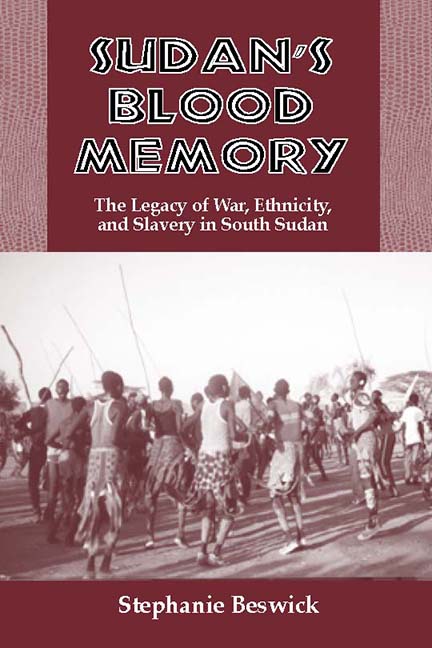Book contents
- Frontmatter
- Dedication
- Contents
- Maps
- Preface
- Acknowledgments
- A Note on Orthography and Languages
- A Note on Sources
- Map
- 1 Introduction
- 2 Geography and Brief History of Sudan
- 3 The Changing Nilotic Frontier
- The Ethno-Historical Formation of Southern Sudan
- 4 Slave Raids, Wars, and Migrations
- 5 Communities of the Sobat/Nile Confluence: The Padang
- 6 Communities on the Eastern Nile: The Bor
- 7 Communities in the Southwest: The Southern Bahr el-Ghazal
- 8 Communities in the Northwest: The Northern Bahr el-Ghazal
- The Ascendancy of the Dinka in Southern Sudan
- Foreign Intrusion and Its Consequences
- Notes
- Glossary
- Bibliography
- Index
8 - Communities in the Northwest: The Northern Bahr el-Ghazal
from The Ethno-Historical Formation of Southern Sudan
Published online by Cambridge University Press: 23 July 2019
- Frontmatter
- Dedication
- Contents
- Maps
- Preface
- Acknowledgments
- A Note on Orthography and Languages
- A Note on Sources
- Map
- 1 Introduction
- 2 Geography and Brief History of Sudan
- 3 The Changing Nilotic Frontier
- The Ethno-Historical Formation of Southern Sudan
- 4 Slave Raids, Wars, and Migrations
- 5 Communities of the Sobat/Nile Confluence: The Padang
- 6 Communities on the Eastern Nile: The Bor
- 7 Communities in the Southwest: The Southern Bahr el-Ghazal
- 8 Communities in the Northwest: The Northern Bahr el-Ghazal
- The Ascendancy of the Dinka in Southern Sudan
- Foreign Intrusion and Its Consequences
- Notes
- Glossary
- Bibliography
- Index
Summary
North and northwest of the Gok and Agar is the vast expansive homeland of the northern Bahr el-Ghazal Dinka. These Nilotes discovered, as they forged northwestwards into their new homelands because of the increasing shortage of lands, that these soils were not as rich as those from which they had migrated. Unlike those of the southern Bahr el-Ghazal, lack of rich soils encouraged faster geographical expansion and hence, faster ethnic integration with many “foreigners.” Thus, the topography of the land dictated the history of the peoples of this region, for these Dinka were forced to fight more battles against formerly resident peoples in order to survive and to support their increasing populations. The northern Bahr el-Ghazal Dinka comprise the Western Luaic, the Rek, the Malwal, and the Western Twic; their northern frontier was the Kir/Bahr el-Arab River. (It is Kir to the Dinka and Bahr el-Arab to the Islamic central Sudanese).
The Western Luaic
The Luaic Dinka are split into two widely separated groups today: one in the Upper Nile Province, which is now part of the Padang group (the Eastern Luaic), and the other residing in northern Bahr el-Ghazal Province and known as the Western Luaic. There are also Luaic clan-peoples within the non-Dinka Atwot amalgam far to the southeast forming a subsection of the same name, although some of these Atwot peoples today disclaim any historical connection to the Dinka. The Western Luaic has six sections: the Abuong, Kuok, Pariak, Rubar, Wunthuc, and Kongor all with subsections.
Historically the Luaic clans forged south from their parent Padang group in the north and crossed the Nile from east to west from the region of the modern town of Bor. It is remembered that the Atwot preceded them and settled in their present homeland. Other Luaic clans, however, continued migrating northwest with the Agar, Gok, and Rek Dinka, apparently leaving some of their clan members en route as others found new homelands. Makuac Majok Mangeng states: “We were moving with our cattle and goats and then eventually the Gok people settled. Sometime after the Rek clans had settled in their new homelands the Luaic then settled to their east led by a priest, Makol Thokeor, who led a number of Luaic clans to their present location in [what is now] the Bahr el-Ghazal.”
- Type
- Chapter
- Information
- Sudan's Blood Memory , pp. 79 - 88Publisher: Boydell & BrewerPrint publication year: 2004



